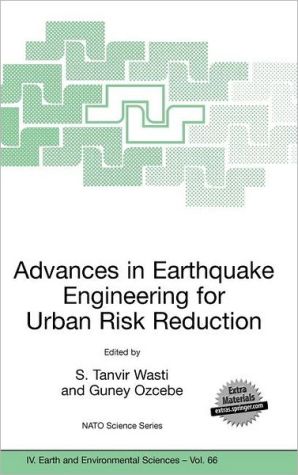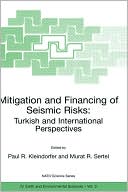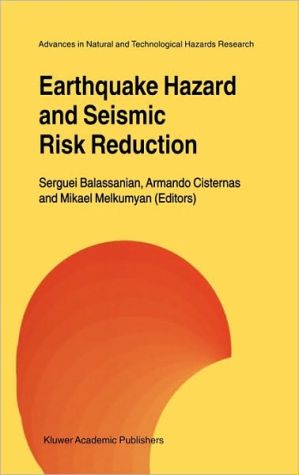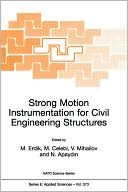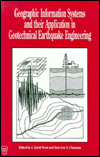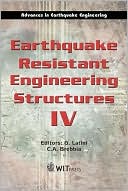Advances in Earthquake Engineering for Urban Risk Reduction
Earthquakes affecting urban areas can lead to catastrophic situations and hazard mitigation requires preparatory measures at all levels. Structural assessment is the diagnosis of the seismic health of buildings. Assessment is the prelude to decisions about rehabilitation or even demolition. The scale of the problem in dense urban settings brings about a need for macro seismic appraisal procedures because large numbers of existing buildings do not conform to the increased requirements of new...
Search in google:
Earthquakes affecting urban areas can lead to catastrophic situations and hazard mitigation requires preparatory measures at all levels. Structural assessment is the diagnosis of the seismic health of buildings. Assessment is the prelude to decisions about rehabilitation or even demolition. The scale of the problem in dense urban settings brings about a need for macro seismic appraisal procedures because large numbers of existing buildings do not conform to the increased requirements of new earthquake codes and specifications or have other deficiencies. It is the vulnerable buildings - liable to cause damage and loss of life - that need immediate attention and urgent appraisal in order to decide if structural rehabilitation and upgrading are feasible. Current economic, efficient and occupant-friendly rehabilitation techniques vary widely and include the application either of precast concrete panels or layers, strips and patches of fiber reinforced polymers (FRP) in strategic locations. The papers in this book, many by renowned authorities in earthquake engineering, chart new and vital directions of research and application in the assessment and rehabilitation of buildings in seismic regions. While several papers discuss the probabilistic prediction and quantification of structural damage, others present approaches related with the in-situ and occupant friendly upgrading of buildings and propose both economical and practical techniques to address the problem.
From Duzce to the city1Recent advances in the seismic rehabilitation of reinforced concrete buildings in Japan19Concrete or FRP jacketing of concrete columns for seismic retrofitting33In service seismic strengthening of RC framed buildings47An equivalent linearization procedure for displacement-based seismic assessment of vulnerable RC buildings63A displacement-based adaptive pushover for assessment of buildings and bridges79In defence of Zeytinburnu95Automated post-earthquake damage assessment of instrumented buildings117A detailed seismic performance assessment procedure for RC frame buildings135Assessment of seismic fragility curves for low- and mid-rise reinforced concrete frame buildings using Duzce field database151Seismic rehabilitation of low-rise precast industrial buildings in Turkey167Seismic risk mitigation through retrofitting non-ductile concrete frame systems179Hyde-systems for earthquake protection of residential buildings195Learning from earthquakes to improve rehabilitation guidelines for reinforced concrete buildings209Seismic risk scenarios for an efficient seismic risk management : the case of Thessaloniki (Greece)229The multi-axial full-scale sub-structured testing and simulation (must-SIM) facility at the University of Illinois at Urbana-Champaign245Recent experimental evidence on the seismic performance of rehabilitation techniques in Mexico261CFRP overlays in strengthening of frames with column rebar lap splice problem275Seismic retrofit of infilled reinforced concrete frames with CFRP composites285Axial behavior of RC columns retrofitted with FRP composites301Collapse of lightly confined reinforced concrete frames during earthquakes317Evaluation of approximate nonlinear procedures for observed response of a shear wall structure333Assessment and retrofit of full-scale models of existing RC frames353Development of Internet based seismic vulnerability assessment tools369A comparative study of displacement, force and pushover approaches for design of continuous span bridges379Seismic rehabilitation using infill wall systems395Shake table experiment on one-story RC structure with and without masonry infill411Opportunities and challenges of modern concrete technology in earthquake hazard mitigation427Shaking table tests of scaled RC frame models for investigation of validity and applicability of different retrofitting techniques441Analysis of infilled reinforced concrete frames strengthened with FRPS455Tensile capacities of CFRP anchors471Using a displacement-based approach for earthquake loss estimation489Nonlinear drift demands on moment-resisting stiff frames505The seismic well-being of buildings : diagnostics and remedies521
